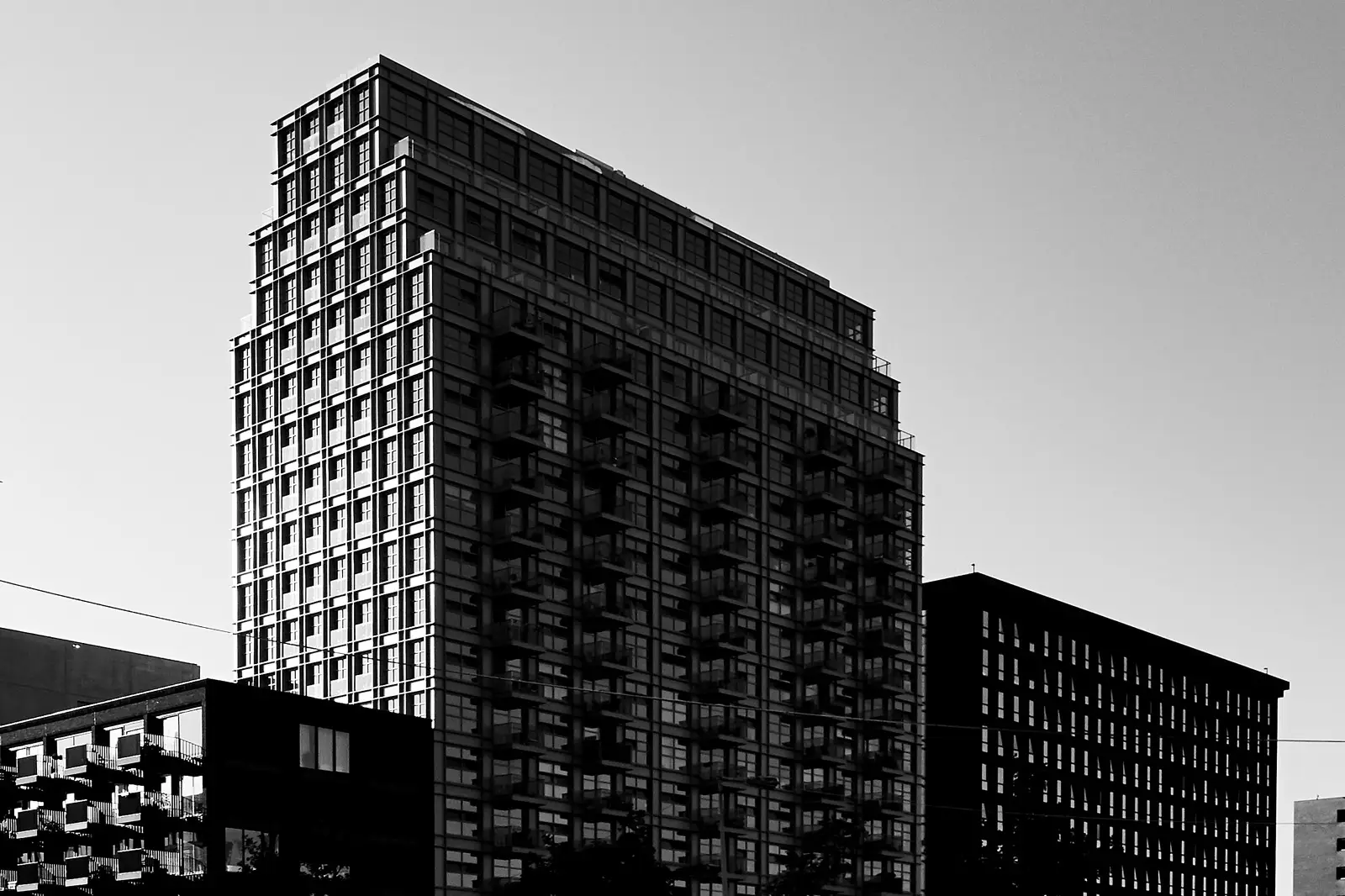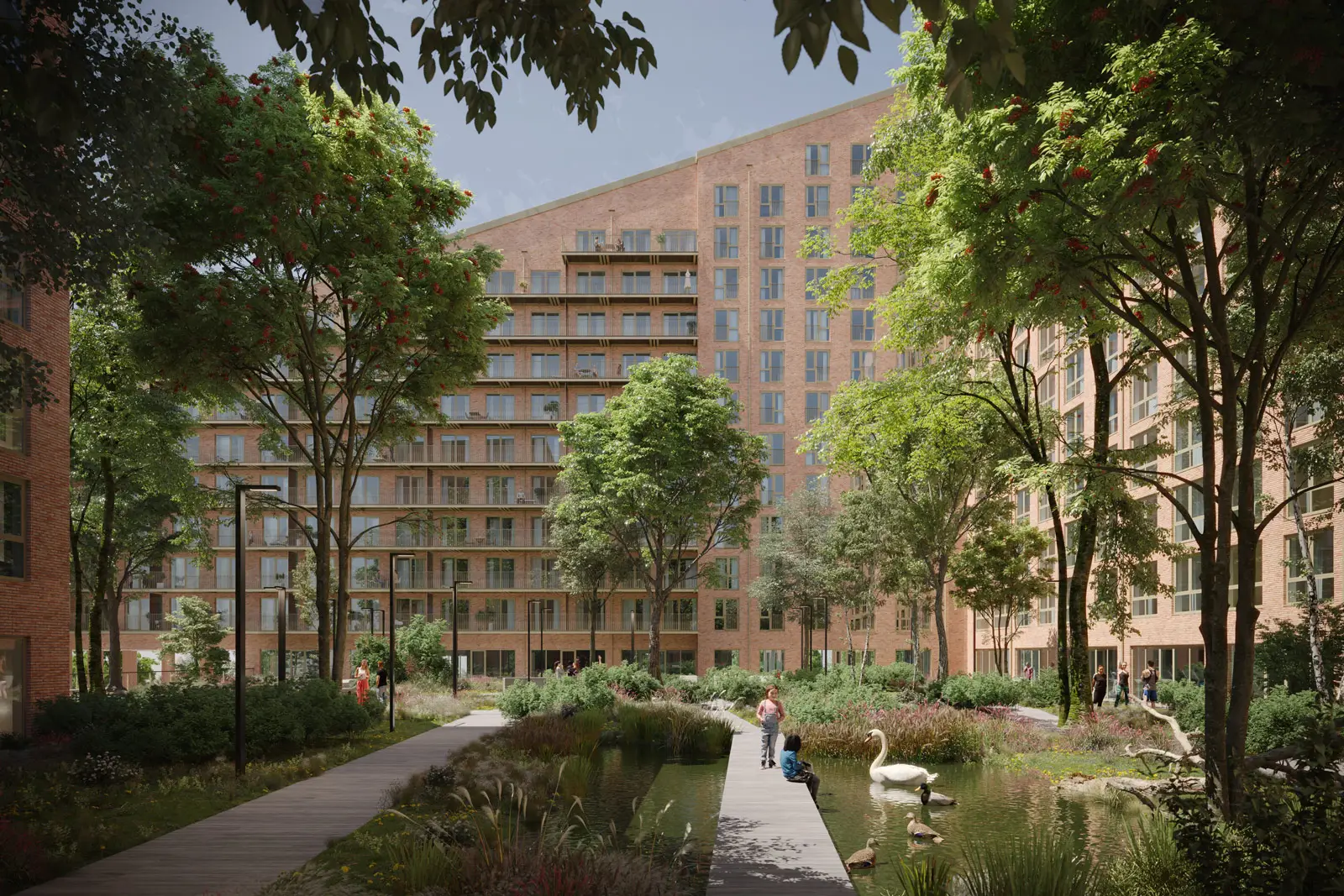With ‘de Werf’ we created a compelling influencer to change a former industrial terrain into a living-working environment. A sturdy high-dense compact housing block that refers to past times.
We use the concept of mass to define the ‘specific weight’ of the city. This refers to a social and economic basis for a viable city that can reinvent itself. At De Werf, on the former NDSM ship dock in Amsterdam, this resulted in a split from an urban planning perspective in which mass is a means to unite extremes: By opting for a high density in one place, space remains free elsewhere for the festivities and creative culture that have already manifested themselves here in recent decades. We make the messy past of the shipbuilding and artist colony visible, because we see authenticity and identity as important values, which will ultimately pay off because a continuous line from the past remains visible.
At the former Amsterdam shipyard NDSM, where we designed the compact and sturdy living-work building De Werf, the past is not used as a thing of the past, but as an influencer. By building some plots very densely, the openness of the old warehouse and dock complex can be maintained elsewhere. This leaves room for some of the old use and the old users, if there is the courage not to express everything in this area in square meter prices. When the cultural factor, including the history of the area, is given more space, you prevent uniformity and in the long term a neighborhood will gain greater social value and its own character.
In 2011 we performed research, the ‘Knowledge Economy’, on the spatial implications of the evolving knowledge and innovation-based economy for the city. The study, entitled “Campus City Project”, focuses on new possibilities for combined housing of education, research, students, newcomers, and start-ups. The NDSM area forms part of a development strategy for the city of Amsterdam. A typologically diverse area between the 19th and 20th-century rings of the city. The future potential of the NDSM, which the research illustrated in a larger context, caught the attention of a new group of players on the housing market. Especially those specialized in setting up and managing new student residences. Four years after our study, one such party, Student Experience, decided to start building.
Large housing volumes in the city are viewed with suspicion because many did not exactly provide social cohesion. Yet the concept of mass does not necessarily have to inspire fear. Mass is essential for a living and diverse city. Without mass there is no urban quality, without mass there is no ‘super plinth’, no living and safe streets, no profitable public transport hubs and no mix of resident groups.
So, we acknowledge a desire for high-density development, which was stipulated in the zoning plan. We freely translated that into the design by varying building heights. These heights range from 22 to 60 meters. Seven buildings divide the block, each with its own height, entrance, program, and typology. The breakdown of the large block into different scales, each with its own architectural expression, reduces and enhances differentiation between buildings. The scale of the block dissolves in the different perspectives at street level.
The architecture is sturdy and simple. The building components extend to the street. Large buildings alternate with small intermediate masses. The materials vary from concrete, steel, Corten steel to different coloured masonry.
The seven entrances of the various buildings allow for a wide range of movement within the public space. We also intentionally placed a mixed program on the ground floor, where public and residents can meet. Homes are also interspersed with art factories, restaurants, workplaces in the form of studios, and spaces for students. The garden is accessible as part of the various public spaces on the NDSM site and is an important green addition to the urban environment of the area. Generating a vibrancy on the street is an important condition for the success of the project, and the future NDSM as a whole.
The homes in De Werf are aimed specifically at young people. The program varies from student housing, rental homes for graduates and other new inhabitants of Amsterdam, to small family homes — all in the mid-market rental segment. The idea behind this program is to provide suitable homes for Amsterdam residents, from the start of their studies and early in their careers — a period that usually involves a lot of moving around before finding a permanent place to live. Residential work studios and public services on the ground floor complete the program. We designed the apartments in collaboration with the developer and the investor.
We designed the building completely in 3D and did the complete draft work for the contractor in BIM, together with our advisors, within the given limited budget and timing.
PROJECT DATA
Client:
COD Amsterdam,
Verweij Mungra vastgoed Mijdrecht
Program:
Student accomodation, appartments,
start-ups and commercial facilities
Ca. 70.000 m2 GFA, 946 appartments
Status:
Completion 2019
In collaboration with:
Van Rossum raadgevende ingenieurs,
Hiensch, LBP, Pleijsier Bouw,
BouwInvest
Team:
John Bosch, Jetze Schreij,
Heleen Reedijk, Leontine Boots,
Farida de Vries, Koos Zwitser,
Michel Jongbloed, Vincent van Draanen,
Mehtap Dönmez, Jan Hijlkema,
Arianne Barendrecht, Phillippe Collette,
Michael van Cutsem, Lennart Dorrestijn
Artist impressions:
Milan Hofmans
Egbert de Boer
Your Captain
























